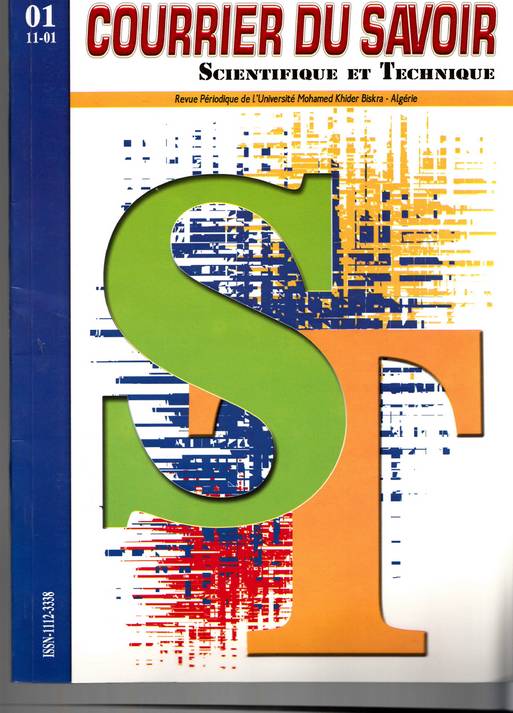CLASSIFYING SOFTWARE FOR REUSABILITY
Résumé
Software reuse has been claimed to be one of the most promising approaches to enhance programmer productivity and
software quality. One of the problems to be addresses to achieve high software reuse is organizing databases of software
experience, in which information on software products and processes is stored and organized to enhance reuse.
The Reuse Description Formalism (RDF) is a generalization of the faceted index approach to classification. It was
initially designed as a tool to help increase reusability of software components at the code level (e.g. functions or
subroutines). The goal of this dissertation is to show that RDF can also be used effectively to represent and reuse other
types of software knowledge.
Références
[1] G. Booch, “Software Components with Ada”,
Benjamin-Cumming Publishing Company, Menlo
Park, California, 1997.
[2] Z. Houhamdi and S. Ghoul. “A Reuse Description
Formalism”. ACS/IEEE International Conference
on Computer Systems and Applications,
AICCSA’2001, Lebanese American University,
Beirut, Lebanon. 2001.
[3] Z. Houhamdi and S. Ghoul. “A Classification
System for software reuse”. Fifth International
Symposium on Programming System, ISPS2001,
USTHB Computer science Institute, Algiers,
Algeria, 2001.
[4] Z. Houhamdi. “A Specification language for
software reuse”. CSS/IEEE Alexandria Chapter.
11th International Conference On computers:
Theory and Application, ICCTA2001, Head of
Electrical Control, Alexandria, Egypt, 2001.
[5] Z. Houhamdi. “Developing a Reuse Library”.
CSS/IEEE Alexandria Chapter. 11th International
Conference On computers: Theory and
Application, ICCTA2001, Head of Electrical
Control, Alexandria, Egypt, 2001.
[6] Z. Houhamdi. “An adaptative approach to reuse
software”. SCS/IEEE 2001. The third Middle East
Symposium on Simulation and Modeling,
MESM’2001, Amman University, Amman, Jordan,
2001.
[7] Z. Houhamdi. “Software Reuse: a new
classification approach”. The International
Symposium on Innovation in Information and
Communication Technology, ISIICT’2001,
Philadelphia University, Amman, Jordan, 2001
[8] R. Kester. “SEL Ada reuse analysis and
Classifying software for reusability
47
representation”. Technical Report, NASA Space
Flight Center, Greenbelt, Maryland, November
1990.
[9] “NASA Goddard Space Flight Center”, Greenbelt,
Maryland. Software engineering Laboratory (SEL)
database Organization and User’s guide, revision 1
edition, February 1999 (internet).
[10] R. Prieto-Diaz, “Domain analysis for software
reusability”, In proceedings of the 11th
international Computer Software and applications
Conference (COMPSA988). IEEE Computer
Society Press, October 1998, pp. 23-29.
[11] R. Prieto-Diaz and G. Jones, “Building and
managing software libraries”, In proceedings of the
12th international Computer Software and
applications Conference (COMPSA'97), IEEE
Computer Society Press, Chicago, October 1997,
pp. 228-236
[12] R. Prieto-Diaz, “Implementing faceted
classification for software
Benjamin-Cumming Publishing Company, Menlo
Park, California, 1997.
[2] Z. Houhamdi and S. Ghoul. “A Reuse Description
Formalism”. ACS/IEEE International Conference
on Computer Systems and Applications,
AICCSA’2001, Lebanese American University,
Beirut, Lebanon. 2001.
[3] Z. Houhamdi and S. Ghoul. “A Classification
System for software reuse”. Fifth International
Symposium on Programming System, ISPS2001,
USTHB Computer science Institute, Algiers,
Algeria, 2001.
[4] Z. Houhamdi. “A Specification language for
software reuse”. CSS/IEEE Alexandria Chapter.
11th International Conference On computers:
Theory and Application, ICCTA2001, Head of
Electrical Control, Alexandria, Egypt, 2001.
[5] Z. Houhamdi. “Developing a Reuse Library”.
CSS/IEEE Alexandria Chapter. 11th International
Conference On computers: Theory and
Application, ICCTA2001, Head of Electrical
Control, Alexandria, Egypt, 2001.
[6] Z. Houhamdi. “An adaptative approach to reuse
software”. SCS/IEEE 2001. The third Middle East
Symposium on Simulation and Modeling,
MESM’2001, Amman University, Amman, Jordan,
2001.
[7] Z. Houhamdi. “Software Reuse: a new
classification approach”. The International
Symposium on Innovation in Information and
Communication Technology, ISIICT’2001,
Philadelphia University, Amman, Jordan, 2001
[8] R. Kester. “SEL Ada reuse analysis and
Classifying software for reusability
47
representation”. Technical Report, NASA Space
Flight Center, Greenbelt, Maryland, November
1990.
[9] “NASA Goddard Space Flight Center”, Greenbelt,
Maryland. Software engineering Laboratory (SEL)
database Organization and User’s guide, revision 1
edition, February 1999 (internet).
[10] R. Prieto-Diaz, “Domain analysis for software
reusability”, In proceedings of the 11th
international Computer Software and applications
Conference (COMPSA988). IEEE Computer
Society Press, October 1998, pp. 23-29.
[11] R. Prieto-Diaz and G. Jones, “Building and
managing software libraries”, In proceedings of the
12th international Computer Software and
applications Conference (COMPSA'97), IEEE
Computer Society Press, Chicago, October 1997,
pp. 228-236
[12] R. Prieto-Diaz, “Implementing faceted
classification for software
Comment citer
HOUHAMDI, ZINA; GHOUL, SAID.
CLASSIFYING SOFTWARE FOR REUSABILITY.
Courrier du Savoir, [S.l.], v. 1, avr. 2014.
ISSN 1112-3338.
Disponible à l'adresse : >https://revues.univ-biskra.dz/index.php/cds/article/view/190>. Date de consultation : 25 avr. 2024
Rubrique
Articles


